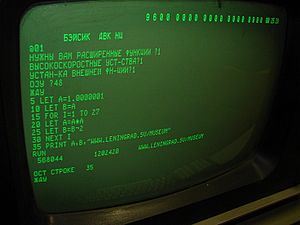At sign facts for kids
The at-sign (@) is a special symbol you see almost every day! It looks like a small 'a' with a circle around it. This symbol is super important in many places, especially when you're sending emails or using computers. It helps connect different pieces of information, like showing which website an email address belongs to.
Contents
What is the At-Sign?
The at-sign, often just called "at," is a symbol that has been around for a long time, but it became really famous with the rise of the internet. It's one of the special characters you can find on a standard English keyboard.
Where Do We See It?
You'll find the at-sign used in a few key ways:
- Emails: This is probably where you see it most often! When you send an email, the @ symbol separates the person's username from the domain name (like the website where their email is hosted). For example, in "yourname@example.com," the @ tells the computer that "yourname" is on the "example.com" server.
- Bills and Prices: Before computers, the @ symbol was often used on bills or invoices. It meant "at a rate of" or "each." So, if you saw "7 widgets @ £2," it meant you were buying 7 widgets, and each one cost £2, making the total £14.
- Computer Programming: For those who like to code, the at-sign has special meanings in many different programming languages. Its exact job changes depending on the language, but it often helps with things like referring to specific locations in memory or marking special types of variables.
Who Invented the At-Sign for Emails?
The at-sign has been around for centuries, but its modern use in email was started by a person named Ray Tomlinson. In 1971, he was working on a way to send messages between different computers. He needed a way to separate the user's name from the computer's name. He chose the @ symbol because it wasn't commonly used in names, so it wouldn't cause confusion. This simple choice changed how we communicate online forever!
Images for kids
-
The Aragonese @ symbol used in the 1448 "taula de Ariza" registry to denote a wheat shipment from Castile to the Kingdom of Aragon.
See also
 In Spanish: Arroba (símbolo) para niños
In Spanish: Arroba (símbolo) para niños




